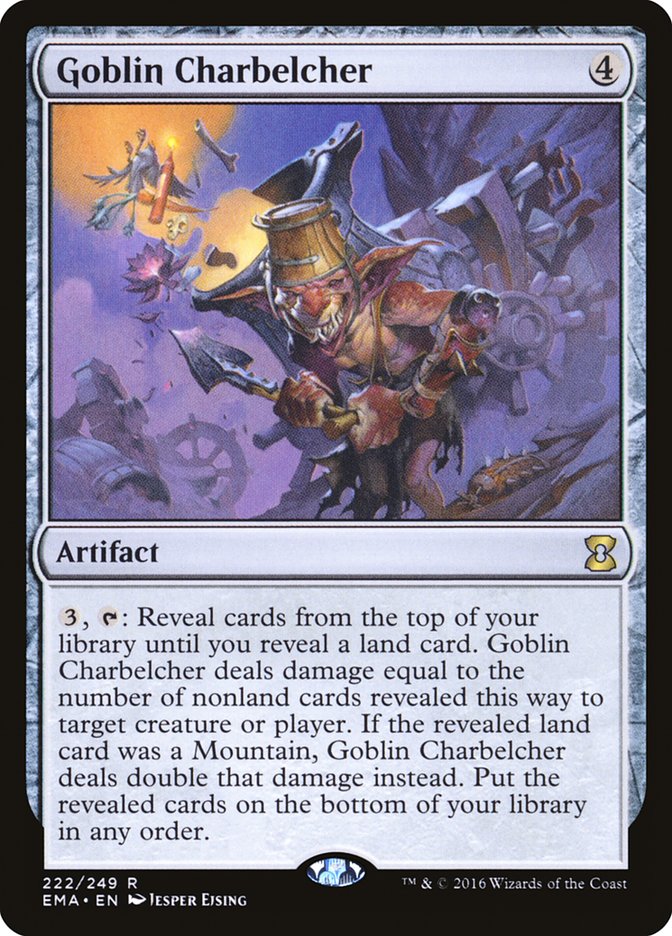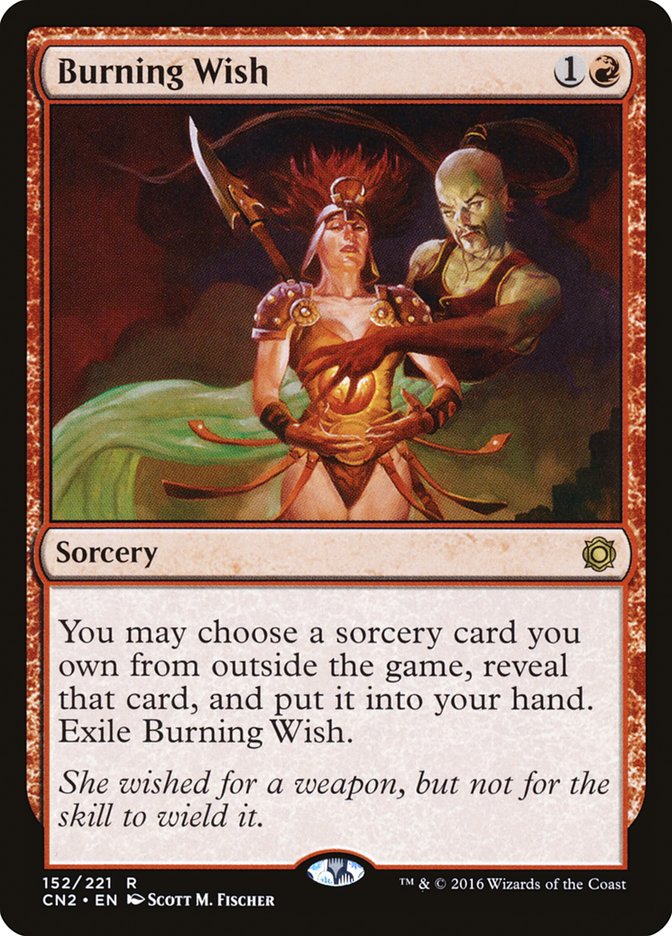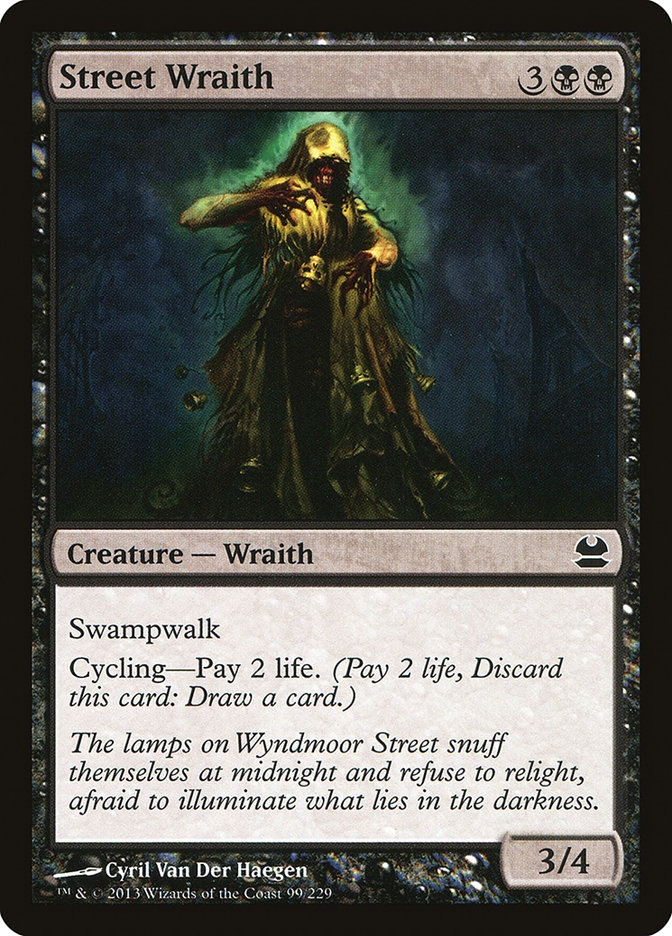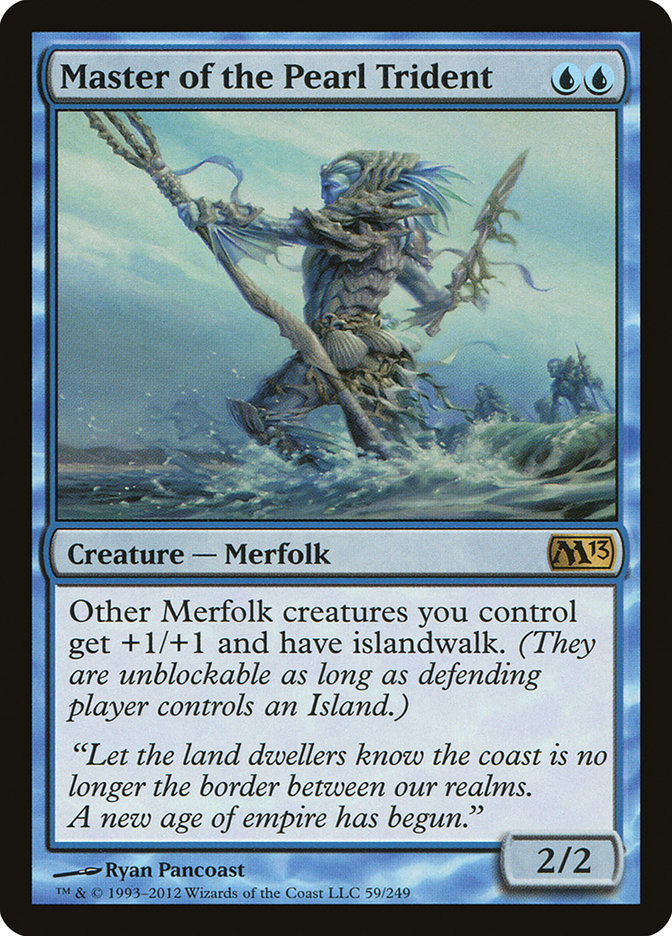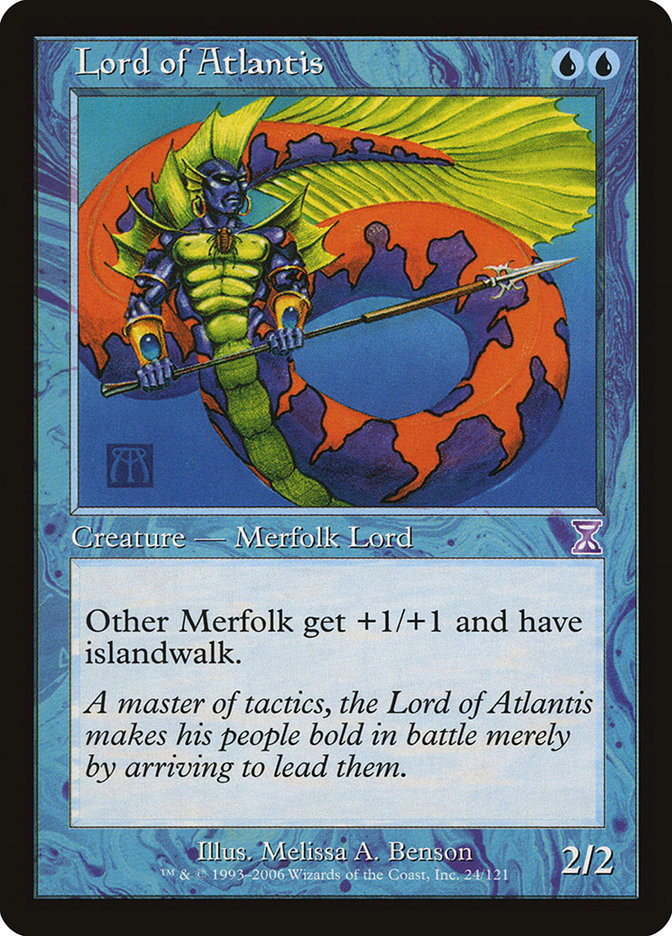Writing for StarCityGames.com can be stressful at times. On one hand, it’s flattering to be heralded with the proper respect that is required of columnists with the website. The other? Fear. Fear that shows itself in different ways, but has the same distinct flavor.
“There’s no way I deserve to be writing for the same place that employs Tom Ross.”
Impostor Syndrome sets in.
“I’ve never even been to a Pro Tour. How is it that somebody in SCG’s HR department thought Jadine Klomparens and I were on par with one another?”
What happens next? That much is on me. Whenever these insecurities bubble to the surface, I’m presented with a choice: work towards fixing it, or give in. Last week, I chose the former of the two.
Wait!
Don’t hit the back button just yet. I’m going to talk about Belcher, but there’s more to this article; my editor isn’t likely the type to let me write an entire piece about The People’s Cannon.
Belcher Is Seriously Reasonable
Why Belcher? Why such a cheeseball deck? I wanted to win. The reason that I worry about my position at SCG isn’t related to my writing capabilities. It’s a lack of results. I want to win.
In fewer words, I’m hungry.
In a recent CEDTalks, Cedric Phillips sat down with Gerry Thompson to talk about his reason win at Pro Tour Amonkhet with Mono-Black Zombies. In said interview, Gerry brought up one of my favorite points in Magic (originally coined by Zac Hill if I’m not mistaken, but don’t quote me on that):
“You don’t get extra match points for being clever.”
To that end, I’m not one to write off entire archetypes because they’re “joke” decks or because “they’re just bad.”
Before this tournament, I had written a few articles singing the praises of U/R Prowess, and I was pretty happy with new things I’d been trying out in the archetype.
The banning of Sensei’s Divining Top was seemingly an incredibly positive change for Prowess. Miracles was an unfavorable matchup and its exit from the format freed up slots in the sideboard that would otherwise have been dedicated to Exquisite Firecrafts. Unfortunately, things aren’t that easy.
Miracles was beating things other than Prowess in Legacy, and its presence impacted what people were playing.
- Without an incredibly competent Storm pilot, it was hard to consistently take down Miracles. This put Storm at having a smaller chunk of the Legacy metagame than one would expect.
- People were playing more Abrupt Decays to beat Counterbalance, and this made Chalice of the Void worse.
- With the printing of Monastery Mentor, Stoneforge Mystic had been replaced in Miracles as the “go-to” fast white creature to kill players with, and many of the blue Stoneforge Mystic decks were regarded as strictly worse versions of Miracles.
The departure of Miracles flipped all of these, and things were looking grim for Stormchaser Mage. Storm was picking up, Chalice of the Void was everywhere, and Stoneforge Mystic kept creating unwinnable sub-games for those of us trying to fight the good fight with Chain Lightning.
So where did that leave me?
There were about three realistic options for what I could learn to pilot competently and had access to, with Belcher being the easiest deck to find the cards for. After talking to #TeamSnugglequest and receiving their blessing, it felt irresponsible to instantly dismiss Belcher with zero games played. To Magic Online!
One League later, and this happened:
Spells (48)

I dropped a single game in the league and it was because I accidentally kept a hand with multiple Tinder Walls. Newsflash: they can’t cast each other.
“That was just a fluke. I must’ve gotten lucky to beat two Force of Will decks.”
I play another League. Make it to the finals again.
“Okay, I should probably work to conceal that I’m possibly playing Belcher. This deck is worse if your opponent knows what is going on.”
Concede.
Enter another League. Make it to the finals and concede.
Enter another League. Lose the first round, win the following four.
It’s entirely possible I’m just a savage lucker, but 17-3 across four Leagues with a single deck is pretty nice.
Over the course of the next couple of days I played approximately fifteen Leagues, tuning the Burning Wish package, fiddling with Ritual numbers, incorporating Street Wraith into the deck, and so on.
The 50 to 100 matches I’ve played with the deck in the last week have really reinforced something that I’ve always suspected but didn’t really feel I had adequate data to put to paper: there’s no such thing as easy Magic. Even a deck as linear as Belcher has some lines that go incredibly deep and require specific sequencing.
Forming Matchup-Specific Plans
Just brushing the surface, playing with Belcher against something that’s seemingly “the bye” in Death and Taxes requires knowledge that one wouldn’t just instantly know without doing a bit of math.
Creatures (27)
- 4 Mother of Runes
- 2 Serra Avenger
- 4 Flickerwisp
- 4 Stoneforge Mystic
- 2 Mirran Crusader
- 3 Phyrexian Revoker
- 4 Thalia, Guardian of Thraben
- 2 Recruiter of the Guard
- 2 Sanctum Prelate
Lands (23)
Spells (11)

Against Death and Taxes, it’s easy to think that every game is a free win, but it hardly works out that way. Imagine the following seven-card opening hand on the draw against Death and Taxes:
Threat? Check.
Requisite mana for said threat? Check.
Can it be cast on the first turn? Check.
Despite checking off the aforementioned boxes, I would easily mulligan this hand on the draw. Despite casting Empty the Warrens on the first turn, the most Goblins this hand can make with the known tools available to it is eight. That isn’t going to beat an average Death and Taxes draw, and isn’t going to come close to beating Stoneforge Mystic into Batterskull.
This is an example of a line of play available but it not being a winning line, even if it is doing something proactive.
With hyper-linear decks in the same vein as Belcher, it’s important to realize the axis that the deck is fighting on and make all possible decisions with that gameplan in mind. That’s to say, one of the primary skills used while piloting linear combo decks is determining the leveling system within a given matchup and making sure that you are one step ahead of the opponent.
During a later round of #SCGKY I found myself playing against an opponent on Omni-Tell.
Creatures (2)
Lands (20)
Spells (38)

The Belcher versus Omni-Tell matchup ends up being more intricate that one would initially think, despite it looking rancid on paper. Let me explain how it isn’t just a freeroll for Omni-Tell:
Level 1: Both decks are hyper-linear, but Omni-Tell has interaction in the form of Force of Will and Flusterstorm to stop early attempts at comboing.
Level 2: Show and Tell gives Belcher an uncounterable way to put Goblin Charbelcher on the battlefield. This means the Belcher player only needs to find a Goblin Charbelcher and three mana in order to kill the opponent.
Level 3: The Omni-Tell Pilot knows that Show and Tell makes Goblin Charbelcher uncounterable, so they’re unlikely to pull the trigger unless they have a way to stop the Goblin Charbelcher activation once it hits the table. Using Omniscience to Cunning Wish for Trickbind is the only way available at a glance.
Level 4: This puts the onus of aggression on the Belcher pilot to try to kill the Omni-Tell player before they can find the cards they need to combo with protection from sudden death. This either manifests itself in the form of aggressively comboing or trying to lure the opponent into making a mistake.
Each level in this system creates an endless number of subgames within any given decision tree on either side of the table during the match…and they aren’t limited to a single matchup.
Against Stoneforge Mystic decks, knowing the math involved to beat a Batterskull on the play and on the draw is relevant enough that I’m mentioning it a second time.
Understanding when it is correct to just run out Lion’s Eye Diamond on non-combo turns in order to protect it from hand destruction is used more often than one would initially assume.
Using Chrome Mox and Taiga as sources of mana that untap (to Goblin Charbelcher people over the course of two turns) decides a surprising number of games. Keeping three mana or Chrome Mox plus Taiga happens a good amount of the time, but it’s a plan that only works against archetypes without a way to remove a resolved Goblin Charbelcher.
Applying Theory to Other Formats
This line of thinking translates relatively easy to Modern and was a large motivating factor for my choosing to write about it before #SCGBALT. Modern tends to reward format knowledge, and the archetypes of the format tend to be a mix of proactive and relatively linear with dashes of interaction sprinkled in to taste.
This is going to reward people who are able to create the levels of what is important in a matchup. It provides a way to compartmentalize thoughts in relation to a matchup between two decks that doesn’t stray too far from executing what a deck is trying to do.
It’s easy to say something to the effect of “kill the lords out of Merfolk and you’ll be fine,” but is it really that easy?
Not-dying isn’t actually going to win the game. Continuing towards winning the game while answering their threats is completely necessary. Forming lines of play as a sort of stencil to work towards is the easiest way to reinforce play patterns that will lead you to victory in the long term.
Looking Forward to Baltimore
All of this talk about having a plan, and as of Tuesday before the tournament, I still have hardly any idea what I’ll be taking to #SCGBALT. I need to playtest a great deal over the next few days to get myself up to speed on what to be doing in Modern, and despite some decks looking great on paper, I don’t trust myself to properly assess what needs to be done in each matchup to win a larger-scaled tournament.
While I don’t know exactly what archetype I’ll be sleeving up, these seven cards are the in the decks I’m very interested in either learning more about or dusting off in hopes of flexing some atrophied muscles.
Either way, Baltimore is my favorite city to visit, if for nothing more than the Inner Harbor area, and this weekend has the makes for some fantastic Magic. Make sure to say hi if you find yourself at the tournament!


